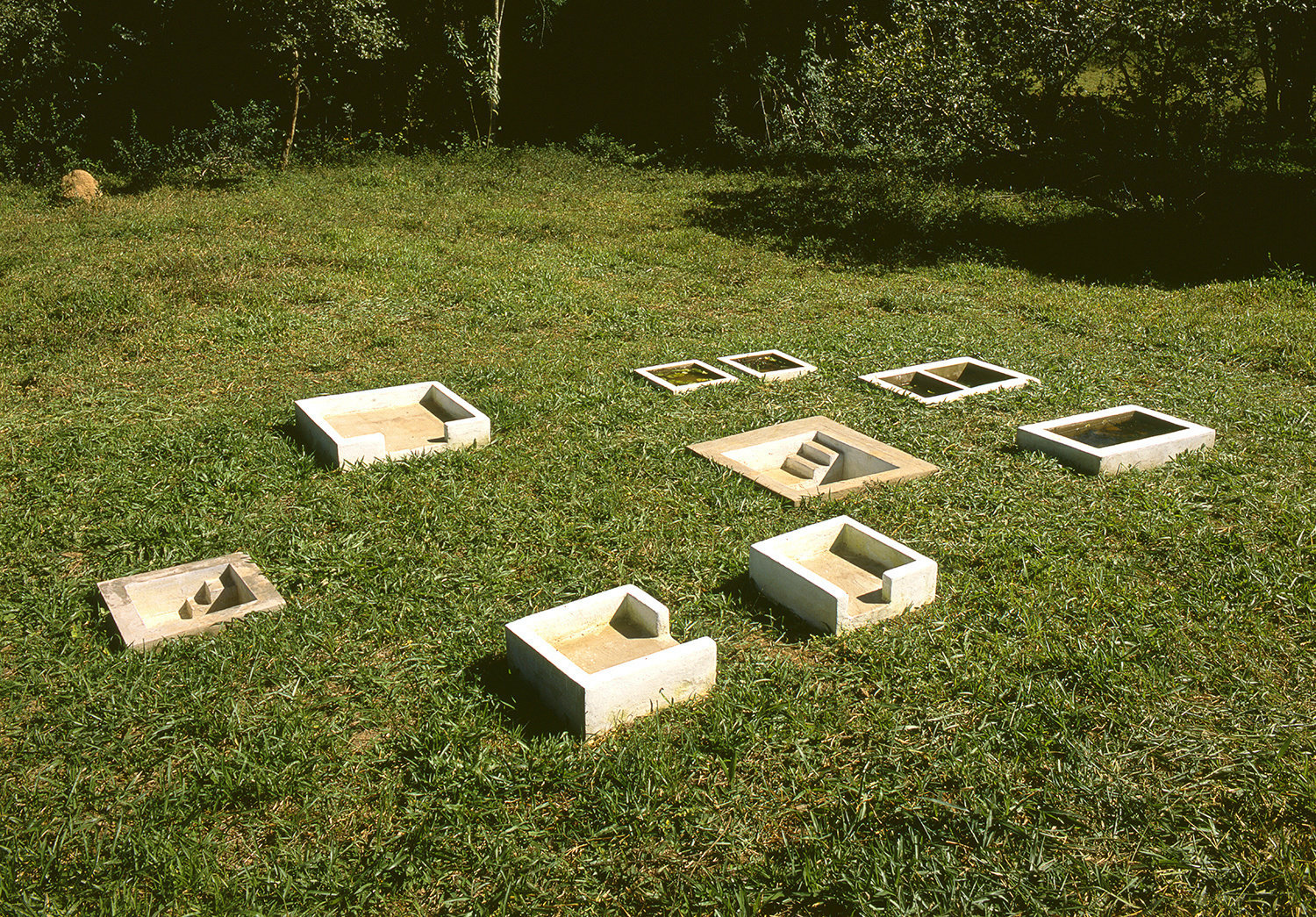Blum & Poe Broadcasts presents free and public access to scholarship and writerly ponderings from our publications archives and network.
In focus this week—an excerpt by art historian Alex Bacon, from Solange Pessoa's first comprehensive English-language monograph (Circle Books, 2020). The book also includes texts by international scholars Cecilia Fajardo-Hill and Eduardo Jorge de Oliveira, plus an interview with Pessoa by Liz Munsell, and will be published this month.
Order copies here.
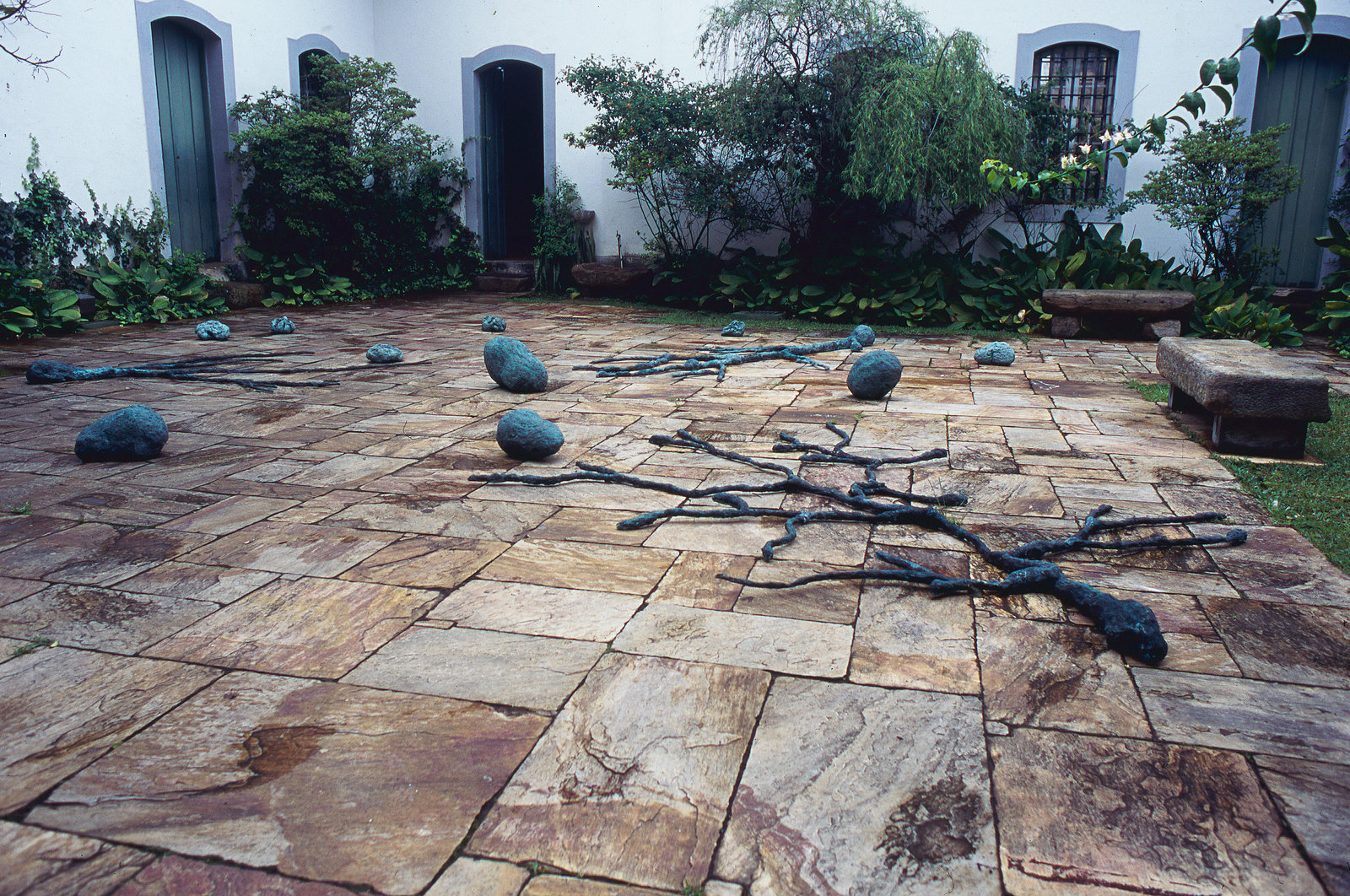

Between Beauty and Abjection: Solange Pessoa’s Bronze and Soapstone Sculptures
By: Alex Bacon
Solange Pessoa’s work self-consciously vacillates between beauty and abjection, twin poles of attraction and repulsion that the artist also perceives in her own psyche and impulses. While both qualities have always been present, it is especially since the bronze sculpture that she began in the late 1990s, and the soapstone works started in 2014, that the artist has foregrounded a work’s formal attributes. Yet, even with the aesthetic interests explored in these works, Pessoa never sacrifices an overriding insistence on self-evidently linking the work to its environment, both physically and imaginatively, as well as revealing the means by which it was made. To paraphrase the curator Catherine de Zegher speaking about Agnes Martin, as well as pioneering abstractionists Hilma af Klint and Emma Kunz; Pessoa is drawn to elements of abstraction not as formalism—to be distinguished from having formal interests, which all artists have—“but as a means of structuring philosophical, scientific, and spiritual ideas.” [1] In Pessoa’s case we can add to this list of concerns the existential and psychological: a complex, layered chaos and flurry of emotions and forces that almost demand the imposition of structuring forms of some kind to give them meaning and legibility.
This vacillation between the formal and the experiential in Pessoa’s work can perhaps to some degree be traced to the time and place in which she began to develop her work: Belo Horizonte in the period immediately after the end, in 1985, of the US-backed authoritarian rule of the Brazilian military government. This was an epoch marked by controversy over the history of abstract art in Brazil, and its role for contemporary art. This may account for Pessoa’s interest in it, as well as her ambivalence about what it might mean for her own work.
By the late 1980s the once vibrant tradition of abstraction in Brazil had become tainted by its association with the dictatorship, despite the fact that it had originally emerged out of a period of democratic optimism, both politically and aesthetically. For example, Oscar Niemeyer’s modernist architectural masterpiece, the city of Brasilia, which was intended as a utopian expression of abolished hierarchies and new beginnings, instead became a symbol of the dictatorship, which took it over in 1964, only four years after it was inaugurated. These associations stuck despite the fact that Brasilia had been erected in a preceding era, and that Niemeyer’s leftist political views lead the dictatorship to essentially exile him. Because they took Brasilia as their official seat of power, the city, like Constructivist art, became wrapped up in the repressive nationalism espoused by the military regime. This course of events was far from unique to Brazil as, in the 1950s and ’60s, branches of abstraction in Latin American countries from Cuba to Venezuela were similarly maligned. [2]
In 1988—the year of Pessoa’s first institutional exhibition—a new era was decisively ushered in Brazil with a revised, more democratic constitution. In this moment of hope and optimism, Pessoa began work on a series of sculptures and installations utilizing organic materials, ranging from clay to human and animal hair. These works, in their brush with the abject, went against the region’s dominant tradition of abstract art, which was the context in which Pessoa had been educated, broadly speaking, as she studied at a school largely staffed with faculty aesthetically aligned with Constructivism and the School of Paris.
Pessoa comes from an educated background, and Belo Horizonte, where she has lived most of her life, is dense with Niemeyer’s architecture and influence. Pessoa is thus well acquainted with Brazilian art and architectural history. But the timing of her entry onto the artistic scene in Belo Horizonte meant that she was also searching for different precedents out of which to establish her own artistic contribution. She found this alternate history in many of the inclinations that she established from a young age, including an interest in Brazilian countercultural movements, like Tropicália and Antropofagia, and also in the culturally rich, colonial-era city of Ouro Preto, which contains a renowned collection of Brazilian Baroque sculpture and architecture from the 18th century. Growing up, Pessoa’s mother told her about the sculptures of saints made with human hair that populate the churches there, which is an image that has captivated her ever since.
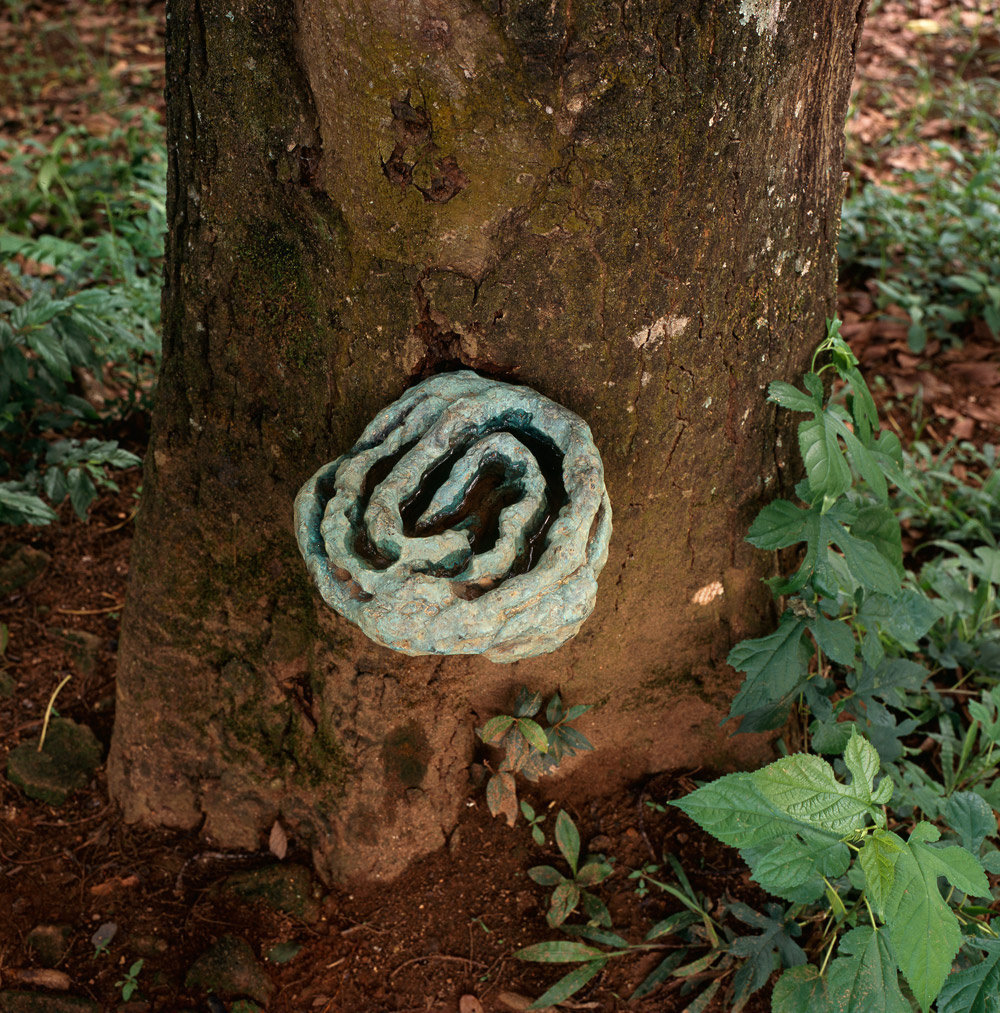

In a way these interests involved Pessoa revisiting the origins of Brazilian modernism itself, as it was these buildings and objects that Niemeyer drew on in his early work, and which his mentor, Lúcio Costa–who was one of Brazil’s first modernist architects–preserved and maintained as head of the National Service for Historic and Artistic Heritage (IPHAN). Not to mention the cannibalizing, multicultural impulses channeled in the poet Oswald de Andrade’s founding manifesto of Brazilian modernism, Manifesto Antropófago (1928). Arguably, by the late 1980s time had blunted the Baroque and intersectional aspects of Brazilian modernism, and thus it was necessary for Pessoa to rediscover them for herself. This rediscovery, and its integration into a radically new kind of art, has been significant for subsequent generations of Brazilian artists, some of whom studied under Pessoa, in her influential role as a professor at the Escola Guignard in Belo Horizonte. [3]
Alongside the Baroque, Pessoa was also interested in the cultural production of indigenous peoples, and especially their craft traditions involving organic materials like ceramics, feathers, hair and leather. Since the late 1980s all of these have featured in Pessoa’s work, and this aspect of her influences is radical considering that dominant trends in Brazil have long favored colonial Portuguese traditions over those of native peoples. [4] Of these the Baroque is the most revered, even as it also presents another side that subverts any attempt to see it as simply a Portuguese import. For example, the mythical sculptor Aleijadinho, the best-known protagonist of the Brazilian Baroque, is reputed to have been the son of a Portuguese immigrant and an African slave. The non-European is thus simultaneously irrevocably embedded in, just as it is partially erased in the very act of being folded into, the Brazilian Baroque.
After more than a decade of primarily exploring this darker side of Brazilian art history and its diverse panoply of under-recognized aesthetic languages, at the end of the 1990s Pessoa began work on a series of bronze sculptures. While bronze casting is an old technique redolent of European fine art tradition, the vagaries inherent in the casting process presented Pessoa with a way of working that balances control in the forming of the clay object to be cast, with the inevitable occurrence of idiosyncrasies in surface effects that exceed it. Evoking a legacy of sculpture since Rodin, Pessoa embraces these side-effects of the bronze casting process as ways to link the work to her hand, and thus to the personal, even psychological aspects of making, which are then extended to how the viewer approaches and experiences the finished sculptures. This evidently man-made aspect of the work is juxtaposed with their morphology, which is often natural in derivation. Rocks, eggs, trees, snakes and fruits are just a few of the shapes that Pessoa’s bronze sculptures suggest.
Pessoa underscores this element of the work, which is born out most explicitly in the green patina that the bronze acquires, and which signals its mutability over time in relation to its environment—a quality that Pessoa enjoys. She does so when she places the bronze sculptures outdoors, as is the case, for example, with her 2008 installation Sleep, which is permanently installed on the grounds outside the Niemeyer-designed art museum in the Pampulha lake complex in the suburbs of Belo Horizonte. There the works blend with their surroundings to such a degree that at first they could be mistaken for ambiguous growths emerging from the lake. This is a humorous as well as sinister take on the work, considering that the lake is man-made and not a naturally-occurring feature of the landscape. One can also consider a recent snake-like form along these lines, given how it sits coiled, extending itself upwards out from the pond in which it is installed.
It has long been important to Pessoa that the work interact directly with nature, and she even establishes situations where it is encouraged to take over the work she has placed in it. For example, in an important installation of 2000, Pessoa placed her ceramic vessels in a courtyard of the Casa do Pilar at the famed Museu da Inconfidência in the historic city of Ouro Preto. There the artist allowed the plants and vines in and around the works to follow their course uninhibited, ultimately overtaking her sculpture and integrating it into the landscape, such that it is hard to tell what is art and what is nature, a confusion Pessoa relishes.


The opposite situation exists when these works are placed in the white cube of a conventional contemporary art gallery, as Pessoa regularly does. In this case the vital organicism of the work, among other things, draws attention to the sterility of its surroundings. It is as if an element of nature found itself in an alien atmosphere it was never supposed to occupy and has managed—against all odds—to eke out an existence in the harshest conditions, which is also one way to interpret the way in which Pessoa’s bronze sculptures seem simultaneously soft and hard. The rigidity of the bronze is subtended by sinuous curves and modeled surfaces that suggest the generous pliability of the original clay material that has been cast, not to mention the natural associations already discussed. These many layers to how we read Pessoa’s bronze sculptures when we encounter them means that we approach them with curiosity; one with intellectual ramifications, as well as, and stemming from, phenomenological ones. This is true whether the work is installed inside or outdoors.
The work’s organic resonances are emphasized when Pessoa includes pieces of foliage in the sculpture, which sets it off, and all the more dramatically in a white cube context. For example, there is a work, Untitled (2016), which seems to have grown a covering of moss, while the depressions in another, Fonte (1997), contain pools of water and a grouping of small spherical forms that look like some sort of nut. Such moments in Pessoa’s work, like the positioning of forms at Pampulha, suggest that she is not without humor, despite often tackling large psychological, and even metaphysical issues.
One such sculpture comes readily to mind: a small bronze blob that in 2004 Pessoa placed on the steps outside of a small chapel, Capela Nosso Senhor do Bonfim in Santa Bárbara, as if the sculpture were crawling out of it. A provocative photograph captures the Archbishop Dom Luciano Mendes de Almeida, at the time Brazil’s most prominent religious figure, pouring water over the bronze object. One could interpret the scene as one where Mendes de Almeida is either bestowing a blessing on this intrepid being, or else casting it out. This is a relatively lighthearted take on a serious line of questioning, present in some of her other work, about the value of certain materials and rituals and the notion of the transcendence of the earthly, material realm. This is most explicitly and monumentally engaged with by her ongoing, more than decade-long project, Catedral (1990–2003) [5], which is an expansive work made in part out of human hair, pieced together and mounted with leather into an elegant, serpentine form suspended from the ceiling. [6] It reaches upwards in an evocation of that most sacred building type, and specifically the minimal, attenuated vertical extension of Niemeyer’s famous cathedral in Brasilia.
Pessoa’s soapstone sculptures represent perhaps the apogee of her more formalist aesthetic inclinations. Embracing a mestizo craft technique, Pessoa works with local stone-masons at the workshop of Ms. Dionísia José Gomes, outside of Ouro Preto, to make them. [7] She instructs these craftspeople on her specifications and they execute to order. The forms of these works to some degree riff off of those of her preceding bronze sculptures. But while they share a morphology drawn from nature, the soapstone works are vessels, where the bronzes are growths. They are complimentary in this way as well, the soapstone works being concave and receptive, the bronzes convex and presences within space.
As with the bronzes, Pessoa also likes to install the soapstone sculptures outdoors and enjoys when they fill up with water after a rainfall, or else when small plants or organisms grow in the soft stone. This gives seemingly stolid works a sense of life that her works with more obviously organic materials, like hair and leather, self-evidently evoke. Like the bronzes, the surfaces of the soapstone sculptures self-consciously bear the marks of the work’s making. This element is important in drawing the viewer in to an intimate experience of, and relationship to, the work. Pessoa underscores this when she describes a “touching gaze,” which is evocative of the philosopher Maurice Merleau-Ponty’s writings on Cézanne, in which he describes the painter as seeking to reach out and “touch” his favored subject—the Mont Sainte-Victoire—with his eyes, and by extension his paintbrush. [8]
The worn, variegated surfaces of her bronze and soapstone sculptures invite the viewer as if to caress them with his or her eyes, connecting them to the act of making. Given that the artist does not fashion these surfaces herself, she is—in this limited sense—in the same position as the viewer: an intimate observer of an object that has been brought into being for aesthetic delectation. This sense of intimacy takes on an added level of meaning in the soapstone works, whose excavated contents evoke a bodily interiority, whose carved forms can be read as elegant and abstract suggestions of guts and bones, for example. It is as if a specimen had been pared open on the surgeon’s table and we were invited to take a privileged look inside the workings and structure of the entity before us. Yet this living form has also ossified, fossilized into the stark gray of the soapstone.
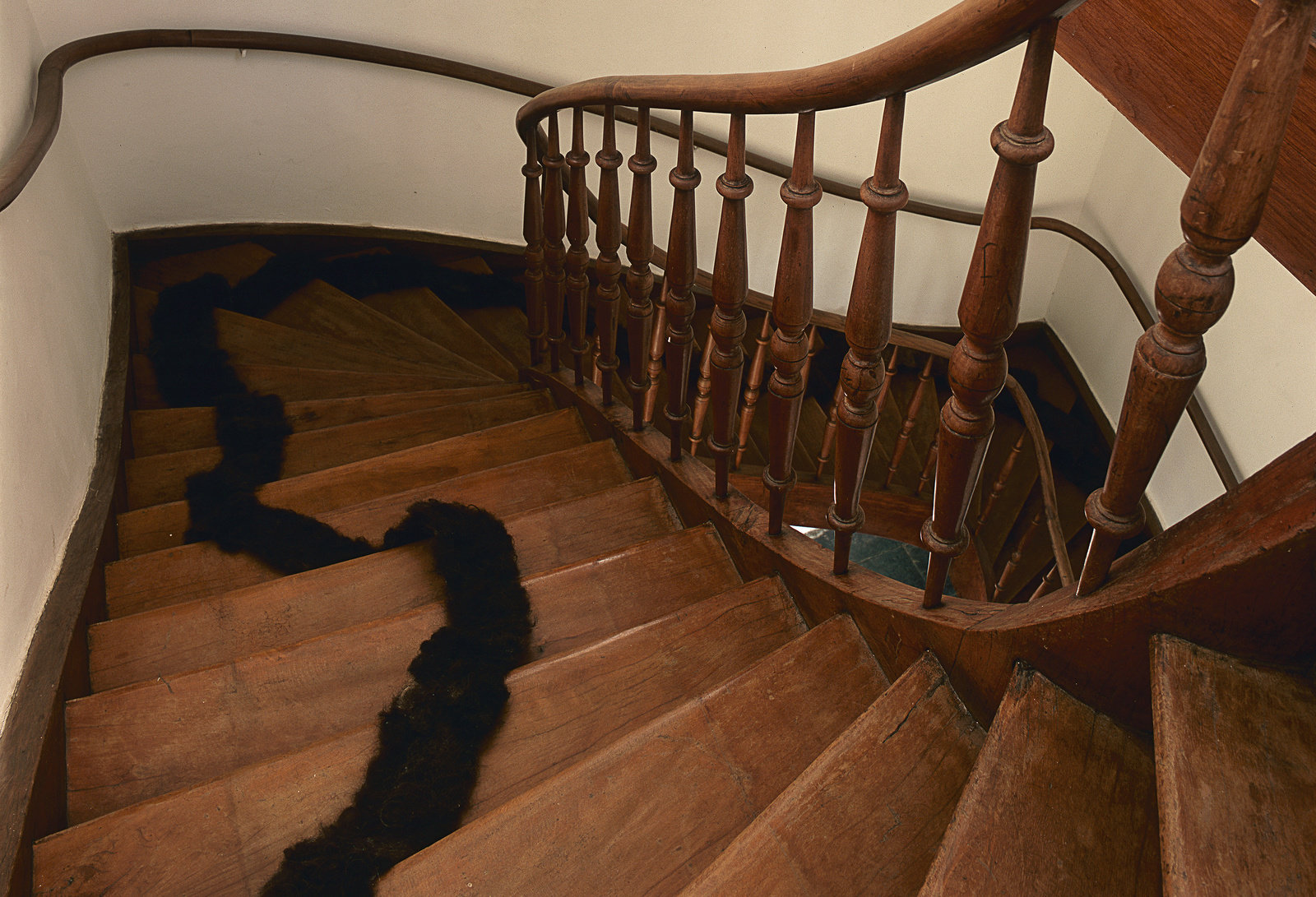

Pessoa produces drawings related to her sculptures, in addition to stand-alone works on paper and canvas. These comprise everything from plans for installations to aesthetic responses to these, executed after the fact. One example would be the oil on paper works Pessoa made after her Pampulha installation. In these Pessoa riffs off of the organic, biomorphic shapes of her cast bronze sculptures. Seen on site these convey a sort of animism, whereby one has the sense that they could have arrived there millennia before, having crawled out of a primal ooze and settled on this bank, perhaps even fossilizing there. Yet, if this is the case, one gets the impression that they could spring back to life at any moment.
This potentiality is conveyed in an imaginative way in two works on paper after this installation, wherein it is as if Pessoa has diagrammed a proliferation of life on the banks of the Pampulha lake. The halo around a lozenge-like shape, reminiscent of that of the sculptures, suggests a sensorial quiver, as if the sculpture has just awakened and is preparing to explore its environment, a sense of animation that is extended to trees and other foliage indicated by Pessoa’s brush, and especially to the birds she has included in one of the drawings.
These works on paper are provocative and can be seen as reflecting back on the sculptures to which they relate. For they allow us to differently interpret Pessoa’s three-dimensional work. For example, the sculptures where ceramic forms operate as either containers for (or else perhaps are conjoined with) organic efflorescence, whether of foliage or feathers matted together like a wing or flipper. The sense of life that is so clearly conveyed in the drawings can be read by extension in the sculptures to which they are sometimes adjacent. The same kind of potentiality in the drawings is in these sculptures as well. The introduction of organic materials is specific in how it suggests movement and change. This is true both in the patinas the bronze and stone take on with time, and also in the potential—easy to imagine—of the feathers or foliage rustling if the wind was to pick up, or if we were to reach out and touch it, as we are tempted to do by the seductive (if also slightly repellant) nature of Pessoa’s organic materials.
This aspect of animism is not limited to works with natural elements, either. For example, Pessoa’s installation, Alhures (Projeto para parques, fazendas, grandes espaços) (2000–2010), resembles a miniature scaled complex of minimal dwellings. This is emphasized in drawings made by Pessoa on top of photographs of the site, which include schematic renderings of figures walking amongst them. When the works were installed Pessoa included live tadpoles, fish, frogs and water plants, rendering the installation a functioning ecosystem.
Animism is the notion that all material phenomena have agency, and is considered an essential belief of many ancient and indigenous cultures, as well as one that still persists today. Pessoa’s evocation of animism is just one way in which her work suggests the temporal collapse of the present with the distant past. Such a collapse is integral to modernism, having first appeared in the guise of the desire of artists like Cézanne or Seurat to extend the classical traditions of Ancient Greece, then in the manifest primitivism by which artists from Gauguin to Nolde to Kandinsky sought to imbue their work with the vibrancy of the “essential” and “pure” motivations that were seen as having been eradicated from European culture, and which now only remained in non-Western ones.
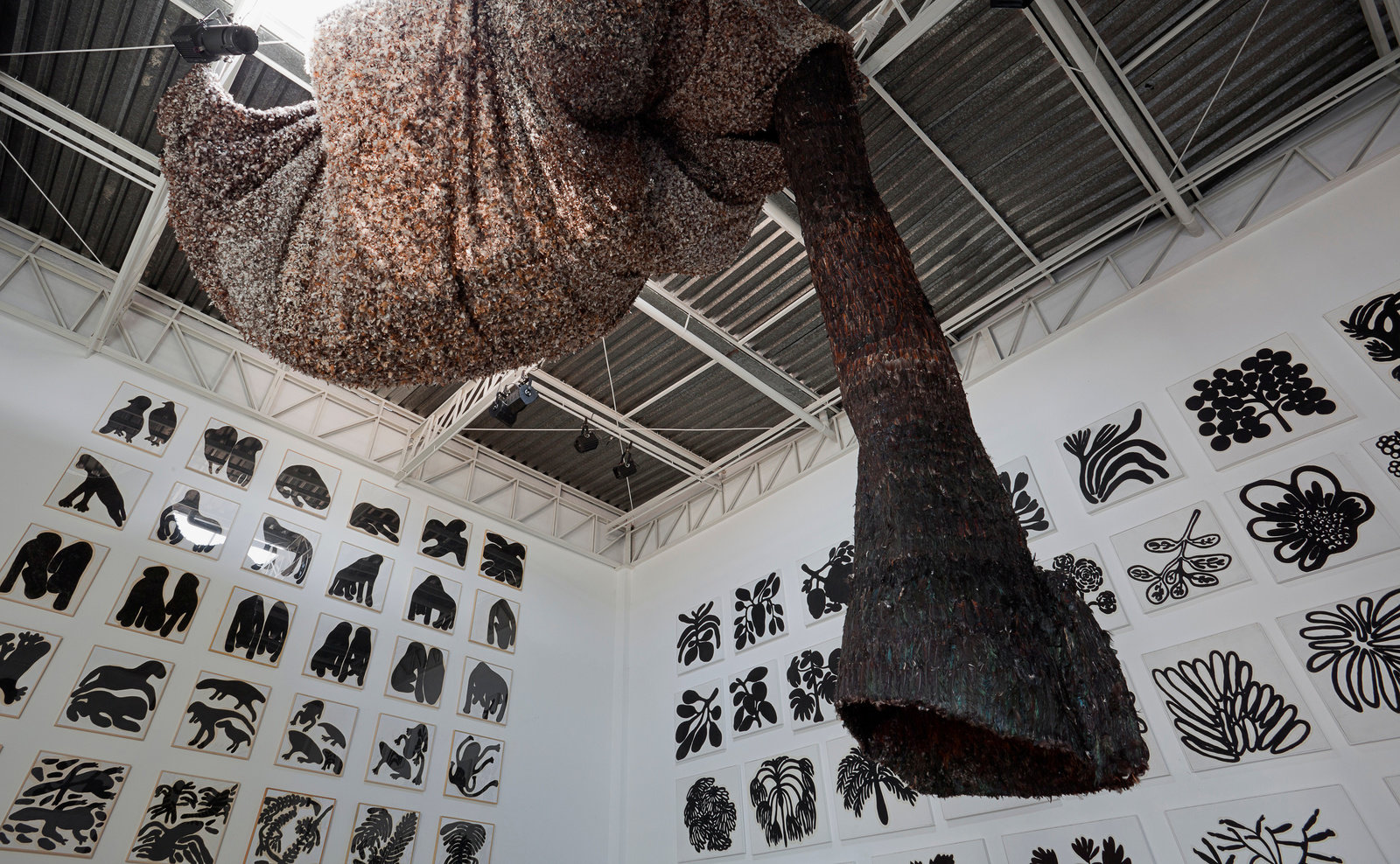

Pessoa’s sculpture does not trade in primitivism—as it does not work out of a style that can be directly associated with any particular culture—but rather evokes, in a general way, a primal (as in primary) state; one characterized by this animism, and which might thus be aligned with any number of ancient or indigenous traditions without relying on, drawing from, or exploiting any of them. In this her work is also related to the temporal collapse of the distant past with an apocalyptic future proposed by American artists of the 1960s, like Robert Smithson and Michael Heizer, who sought to create totems for a nuclear age, and which, by implication, could survive and outlast it. This led to their attraction to geometry as it was expressed by ancient cultures, such as the Nazca Lines in Peru.
The animism in Pessoa’s work, despite not being clearly attributable to any specific reference, nonetheless has a sense of being related to some kind of vital life force. This is a major factor in encouraging us to circulate around her sculptures, which we do in an attempt to apprehend the mysterious sense of life that they convey as an effect of their presence: of how they project and hold attention in the room in which they are installed. This presence is in part a coefficient of the cycles of energy expenditure and gain involved in the making of the work, as well as in its viewing. For example, with the ceramic, bronze and stone works; while produced differently, each involves the physical exertions of molding, casting and carving. The traces of this labor are then registered on the variegated surfaces of the resulting works, in their undulating, modeled exteriors.
As such, one way to consider Pessoa’s sculpture—and this extends as well to older work, like the formed hair of Catedral—is as a condensation of physical labor exerted, which is embedded in works whose surfaces self-evidently reflect this exertion. This is another way in which we can understand how the works have a sense of animism, of a vitality that extends beyond their morphology. That said, morphology has something to do with it as well, as in Pessoa’s recurring motif of the snake, which conveys a coiled potentiality for movement. This is another way in which energy is exerted, as are, in a subtle, small-scale way, our perambulations of her sculpture in an attempt to understand it by ascertaining it from numerous vantages.
Pessoa’s drawings, in their vacillation between works with clear, defined contours and others that are more frantically executed, echo a similar range of personalities as the sculptures and, indeed, Pessoa’s practice as a whole which ranges between works evoking clarity and structure and those evoking chaos and a hedonistic unleashing of primal energies. In a way, capture and release of those energies can be said to characterize her work as a whole; with some works serving to harness and contain them, while others release and disperse them.
[1] DE ZEGHER, Catherine. “Abstract,” 3 x Abstraction: New Methods of Drawing by Hilma af Klint, Emma Kunz and Agnes Martin (New Haven: Yale University Press, 2005), 23.
[2] On the fate of abstraction in Latin America in the 1950s and ’60s see, for example, MCEWEN, Abigail. Revolutionary Horizons: Art and Polemics in 1950s Cuba (New Haven: Yale University Press, 2016).
[3] This school, from which Pessoa retired in 2017, is presently known as the Escola Guignard da Universidade do Estado de Minas Gerais.
[4] For example, in his role at IPHAN Lúcio Costa favored the preservation of colonial Portuguese buildings over historic indigenous ones.
[5] Pessoa reconstituted Catedral in 2003. This version was exhibited at the Rubell Family Collection in Miami, Florida in 2015 as part of No Man’s Land: Women Artists from the Rubell Family Collection.
[6] Initially, Pessoa’s works with hair incorporated that of her family members, but with time she began to collect it from other sources, meaning that the finished Catedral is comprised of the hair of thousands of people.
[7] This workshop is led by a woman named Dionísia. Many men work under her, including her sons, sons-in-law, grandsons, etc.
[8] See “Solange Pessoa in Conversation,” in this volume, page 91. And also, MERLEAU-PONTY, Maurice. “Cézanne’s Doubt,” Sense and Non-Sense. Hubert and Patricia Dreyfus, trans. (Evanston, IL: Northwestern University Press, 1964), 9–25.
